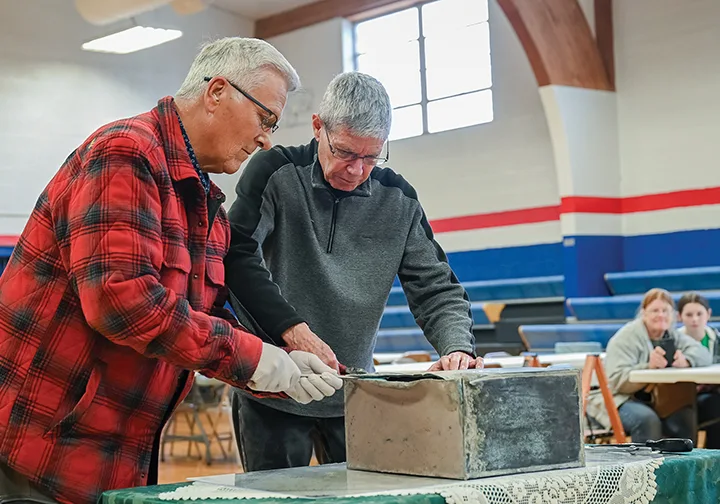
by Kathryn White
Special to The Leaven
SCRANTON — What if you could go back 100 years and catch a glimpse of what was important to your ancestors back then?
The parishioners of St. Patrick Parish in Scranton had the opportunity to do just that when on Dec. 16, 2023, they opened a time capsule buried under their church’s cornerstone over 105 years ago.
Organized to celebrate the five-year anniversary of the demolition of the old church, the event drew some 75 people and was led by pastor Father Ray May. The opening of the time capsule was followed by coffee and cookies.
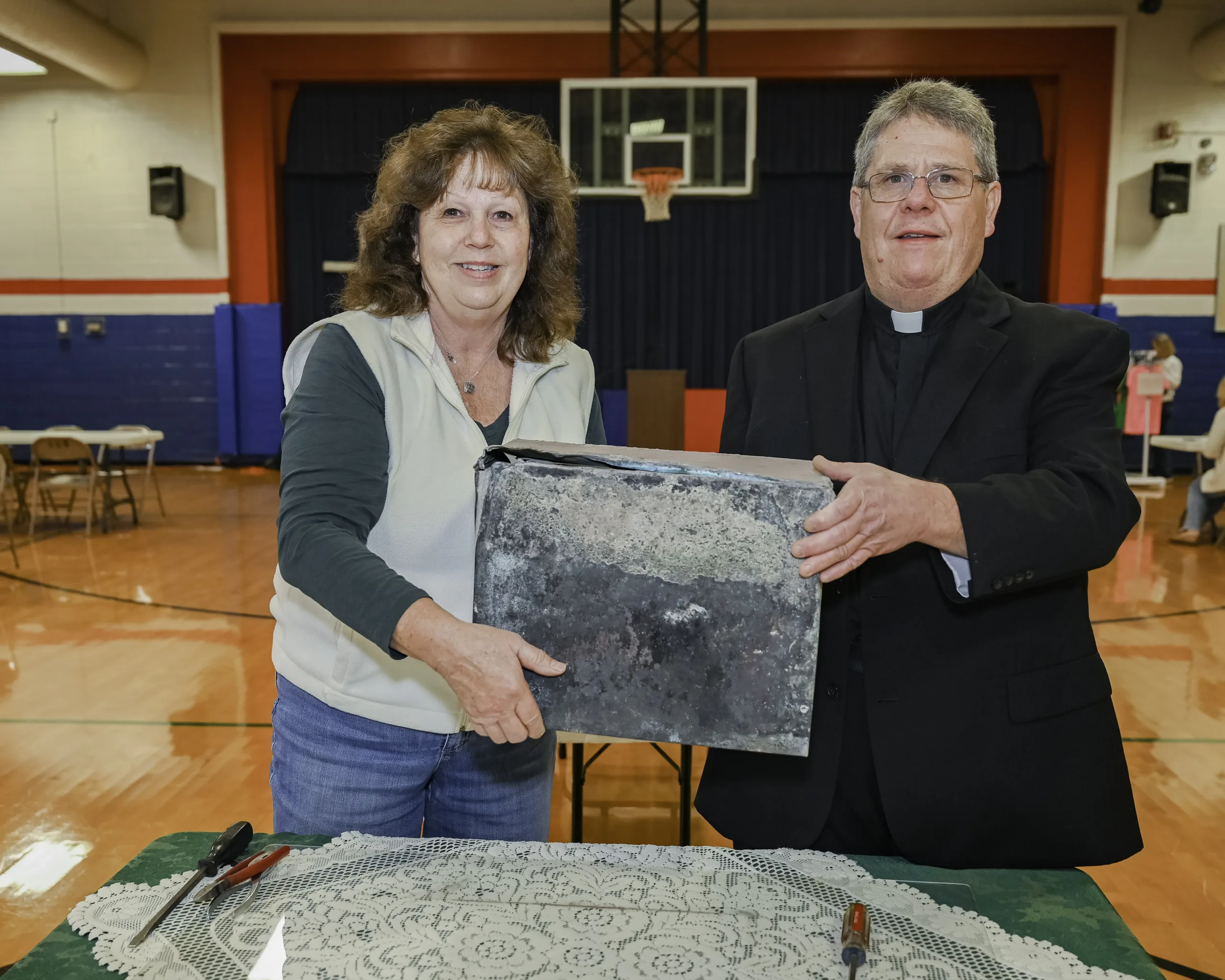
The earliest Catholic settlement in the Scranton area dates back to 1855. Masses at that time were celebrated by visiting priests in families’ homes. In 1874, parishioners raised $250 to build a church. They purchased property (two lots for $25) and bricks, but those efforts were scrapped due to a lack of funds. Times were tough.
In 1877, the current property was deeded to Bishop Louis Fink for $1. With donated stone, a tiny church was erected. It seated 120 people.
Under the leadership of Father Owen Degan, a new St. Patrick Church was built in October 1917. It was at that time that the building committee buried the time capsule under the cornerstone.
The current church was built almost exactly a century later, in 2018. The original cross from the steeple as well as the bell tower were preserved. And of course, the time capsule.
Parishioners decided to open the capsule at the five-year anniversary to honor aging parishioners who still have close ties to that original church family.
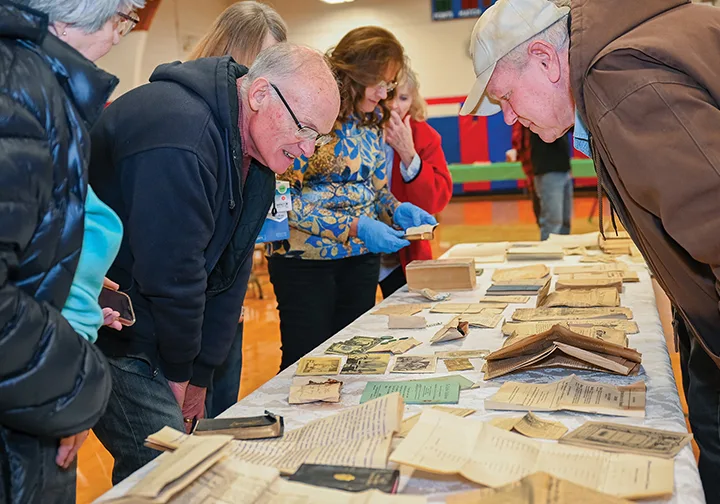
Nanette O’Flaherty, president of the current finance council, was originally resistant to opening the capsule.
“This was buried so long ago, I didn’t think it was ours to open,” she said. “If we didn’t need to tear down the old church, it would still be buried there. It should have been preserved forever.”
After hearing from the families who have long histories at the parish, however, she changed her mind.
“I believed when we opened the capsule it should be a big event — so that as many people could attend as possible,” she said.
The time capsule itself, a copper box, was in excellent condition for a 100-plus-year-old box.
“This was a mining community back then. People knew what they were doing,” O’Flaherty said.
Those parishioners did, too. They had packed the box full — it took over an hour to carefully lift every item out of the box . . . and the artifacts covered four tables.
The contents included a wide variety of items. Newspapers — so many newspapers — from around the region, state and nation. Church missals, Bibles, prayer books, ledgers of donors, and Father Degan’s typewritten baccalaureate sermon. Lists of parishioners. A handful of photos. Huge directories of all the known Catholics in the archdiocese. Rosaries. And a few unknown items because they had deteriorated over time.
There were also several envelopes with handwritten notes inscribed by Father Degan. “May God bless the person who finds this and may we meet in heaven,” read one, and inside was a rosary, scapular and a couple of medals. Another envelope, also inscribed by Father Degan, made the crowd smile and laugh: “Finders Keepers Losers Weepers.” Inside was a dollar bill and coins from a century ago.
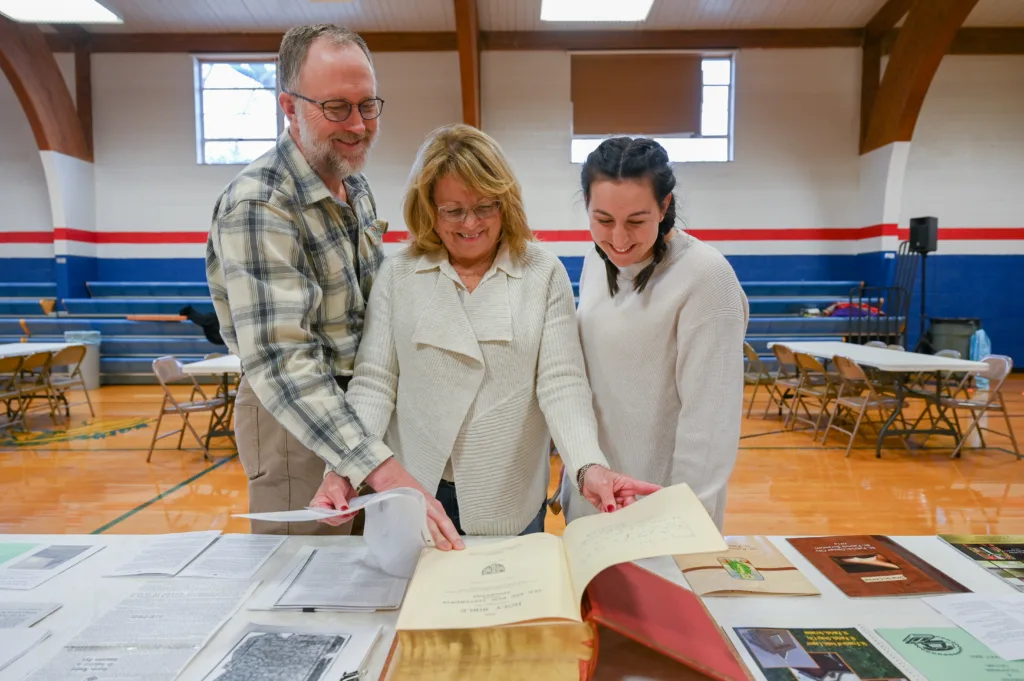
Jim Heise was one of those in attendance at the capsule-opening event.
“My grandfather, Joseph (Anton) Heise, was a member of the parish but was away in Europe during World War I when the church was dedicated and they buried that time capsule.”
Heise found his grandfather’s name in some records, but not much else. Joseph and Johncie, his parents, also attended the event.
Born in 1932, Joseph (Carl) Heise is the oldest living active member of St. Patrick and had fond memories of growing up in the original church.
“The church basement was a dirt floor,” he said. “When they decided to pour the concrete, they used horse-and-wagons to haul the rock to mix the concrete.”
He also recalled being an altar server at the young age of 6.
“I was supposed to set the missal on the altar,” he said, “but I was too small and it was so big I had to hand it to Father Portleance to carry it.”
Father Portleance baptized Heise and was assigned to St. Patrick for 15 years.
“During that time, they would ring the bell in the tower on Sundays and on funerals,” said Heise.
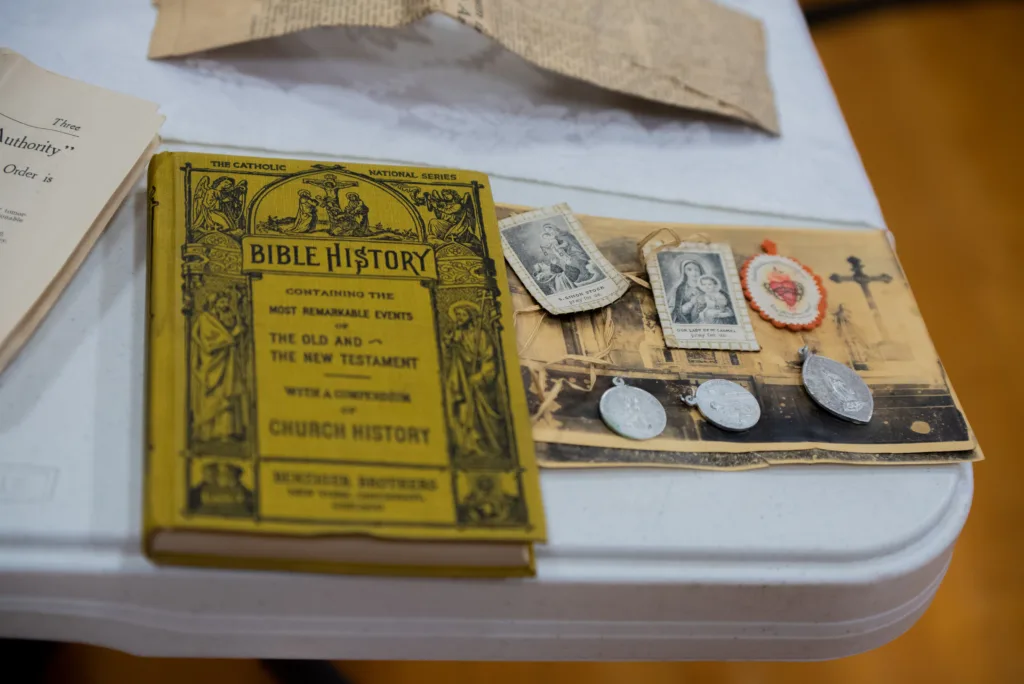
Heise’s great-uncle and aunt were the second couple to be married in the new church in 1917. Many of the current families who still attend St. Patrick had ancestors who started and built the church — including hosting Mass in their homes for visiting priests dating back to 1855.
Lois Shuck is a lifelong member of St. Patrick.
“As a child, I always heard stories about the time capsule under the cornerstone,” she said. “It was a family story and here it was real!”
“The people of that time sacrificed to build the church, giving their last nickel. It was such a monument in Scranton, to have a place to worship God,” she continued. “The strength of St. Patrick is so strong.”
Max Britschge also received all his sacraments at the church.
“It is now our duty to those who come after us,” he said. “Live by example and leave something for future generations.”
“I wish I could read all those World War I-era newspapers that were so well preserved as if they were printed yesterday,” he added. “Even if there may not have been anything of monetary value, it does hold spiritual value. We can be joined together with other Christians from a century earlier. Our faith is the same. One family, under God.”
Parishioners of St. Patrick hope to create and bury a new time capsule when they build a bell tower and parish hall.
“We hope to add to what they buried 100 years ago — not take away. Include the old with the new,” said O’Flaherty.
She created “memory cards” which parishioners could record personal parish memories to be included.
“There has been so much enthusiasm. People want to share their stories.”






